Art - 7 June 2022
Marcus Jansen in interview
"Art as an essential sense to survive. To do something that lives longer than I do"
Currently with Almine Rech at Art Basel Switzerland - June 16 to 19, 2022.
German version of the interview below

E Pluribus Unum (This painting was Warner Brothers pic for their 80th anniversary celebration).
© 2022 Marcus A. Jansen/Artists Rights Society (ARS), New York/VG Bild-Kunst, Bonn, courtesy Expressive Culture LLC
Marcus Jansen is one of the most important contemporary American artists. He had his first art exhibition in New York at the age of 6. He lived in Europe during his youth and attended the Kunstgewerbe Berufskolleg für Technik und Medien am Platz der Republik in Mönchengladbach. He later returned to the USA and embarked on a military career. As a soldier, he took part in the Gulf War Operation Desert Shield and Desert Storm. His military experiences shaped him and changed his artistic world forever.
Marcus Jansen's œuvre has been described as a sharp knife that cuts through politics and society. His paintings are a perfect blend of expressionism, surrealism and graffiti art.
His faceless paintings, a series he started in 2011, are also famous and represent a kind of protest against power structures.
Marcus Jansen says he is driven in his work as an artist by his sense of survival. Art saved his life, he says, and is something that lives longer than he does. As a former soldier, his experiences do not let him go but he can now channel his "struggles" through painting and use it as an additional tool for his vocabulary. In his own words: "Art is the intimate act of war".

When Colonialists Fall
© 2022 Marcus A. Jansen/Artists Rights Society (ARS), New York/VG Bild-Kunst, Bonn, courtesy Expressive Culture LLC
Interview with Marcus Jansen
Alethea&Art Magazine: What drives you in your work as an artist?
Marcus Jansen: Perhaps an essential sense to survive. Doing something that lives longer than me. I’ve said in prior interviews that it has saved my life and I’ve always meant that quite literally. It’s a way to imagine and disappear, reorganize and discover all at the same time while entering a realm without boundaries or attachments.
Alethea&Art Magazine: Do you still have to struggle mentally with the consequences of your work as a soldier?
Marcus Jansen: I think the effects of being a former soldier that has seen the effects of war is something that remains to humble me. But in my case I’ve learned to channel “struggles” through painting and to use that as an additional tool for my vocabulary. I embrace and accept it as part of my practice.
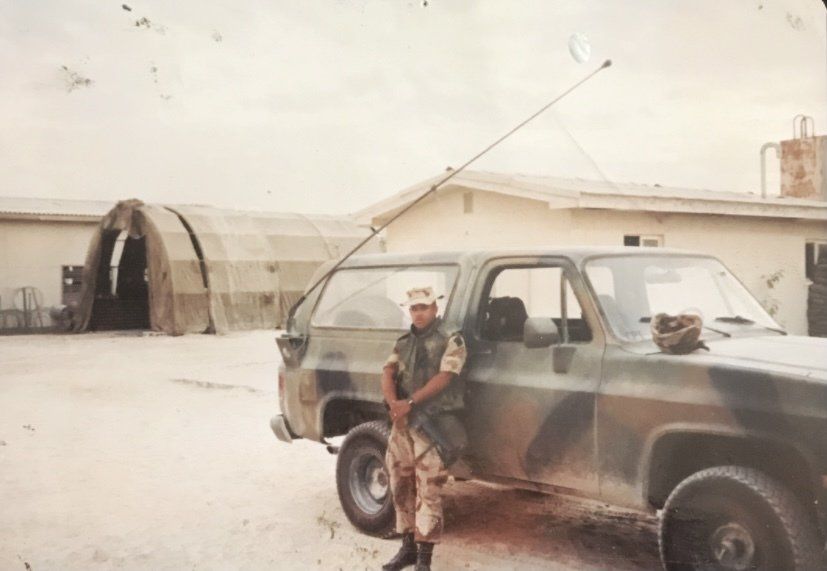
Marcus Jansen as soldier
© 2022 Marcus A. Jansen/Artists Rights Society (ARS), New York/VG Bild-Kunst, Bonn, courtesy Expressive Culture LLC
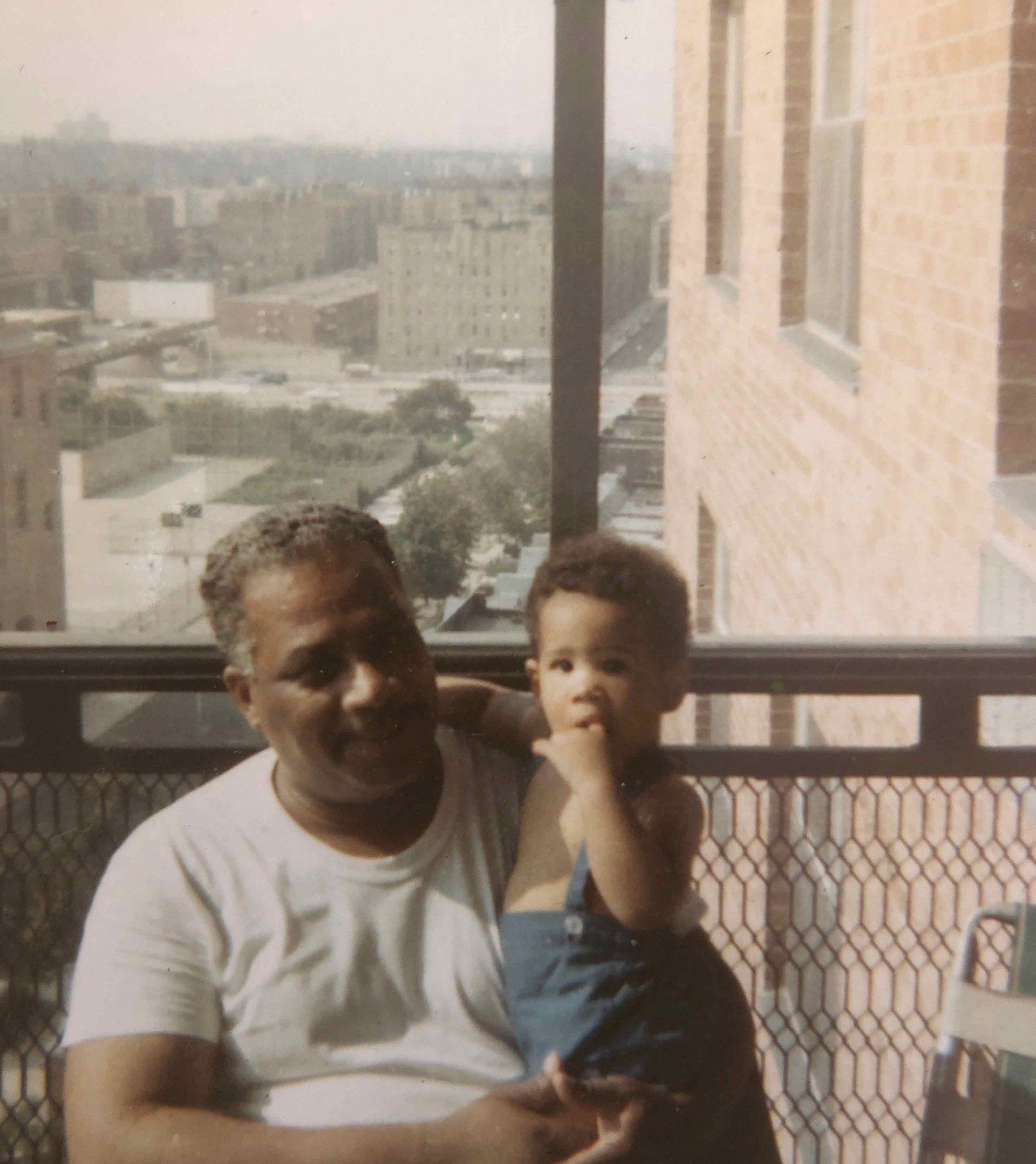
Marcus - South Bronx New York with Grandfather Sidney Hines 1969
© 2022 Marcus A. Jansen/Artists Rights Society (ARS), New York/VG Bild-Kunst, Bonn, courtesy Expressive Culture LLC
Alethea&Art Magazine: Can you say how the faceless paintings came about?
Marcus Jansen:
I started the faceless series in 2011, that’s now eleven years ago and published them in 2012. At the time these were departures from my urban landscapes and responses to corporate power, anonymity and secrecy. They have evolved in to a sort of protest of various power structures from men in suites to colonialists as well as victims of those powers as well.

Peek A Boo I See You
© 2022 Marcus A. Jansen/Artists Rights Society (ARS), New York/VG Bild-Kunst, Bonn, courtesy Expressive Culture LLC
Alethea&Art Magazine: With which artworks did your breakthrough begin?
Marcus Jansen: That is difficult to say since I had several breakthroughs over the last almost thirty years. But commercially speaking, “Creeping Obstacles in Kansas” which made the cover of “New American Paintings” and maybe “E Pluribus Unum” that was Warner Brothers pic for their 80th anniversary celebration. In addition I followed Andy Warhol’s footsteps and painted an Absolut Bottle in 2008 as well. These all were contributing breakthroughs of their time.

Supremacy and Propaganda
© 2022 Marcus A. Jansen/Artists Rights Society (ARS), New York/VG Bild-Kunst, Bonn, courtesy Expressive Culture LLC
Alethea&Art Magazine: In an earlier interview you said that freedom plays an essential role in your art. Have certain art movements or artists influenced your work?
Marcus Jansen: Yes. I was influenced early on by graffiti writers and pioneers in New York City. I instantly recognized that art is making something out of nothing and the movement, mystery and vibrancy it brought along was free and captivating.
Alethea&Art Magazine: Where will your next exhibition be?
Marcus Jansen: I currently am showing with Almine Rech at Art Basel Hong Kong and after that at Art Basel Switzerland with Almine Rech as well. Also at the Richard Beavers Gallery’s second location in Soho soon. The Bronx Museum of the Arts recently added a work to their permanent collection as well.
Alethea&Art Magazine: Mr. Jansen, thank you very much for the interview!

Creeping Obstacles in Kansa
© 2022 Marcus A. Jansen/Artists Rights Society (ARS), New York/VG Bild-Kunst, Bonn, courtesy Expressive Culture LLC
The artist
Marcus Jansen was born in Manhattan. His family lived in the South Bronx Borough of New York City before later moving to Queens NY, where he had his first exhibition at age 6. In art class at school, his painting of a male lion was chosen and hung in Lever House in Manhattan.
His Jamaican mother and German father raised him bilingually. He later lived with his parents in several European countries, Germany, the Netherlands and France. There he experienced racism as the only child of colour in his school. His love of art began very early and he was inspired by artists such as Robert Rauschenberg and West Rubinstein.
Later, Marcus Jansen returned to America and pursued a military career. In 1997 he left the military due to his experiences during Gulf War Operation Desert Shield and his participation in Combat Airborne Engineering Units Desert Storm.
Marcus Jansen returned to New York and began selling his art on the corner of Prince Street and W. Broadway in 1999, as featured in the 2016 art documentary Examine and Report.
His international career as an artist began with a commission from Absolut Vodka. Jansen's first book, Modern Urban-Expressionism was published in 2006.
Solo exhibitions:
La Triennale di Milano Museum, Milan Italy, Museum Zitadelle, Berlin, Germany, The Baker Museum - Artis-Naples, Florida and the Rollins Museum of Art in Winter Park Florida.
Group exhibitions:
University of Michigan Museum Of Art Michigan, The Bronx Museum of the Arts, Moscow Museum of Modern Art, Boca Raton Museum of Art, the Kallmann-Museum, Ismaning, Munich, the Housatonic Museum of Art, CT, The Baker Museum, Naples, The National Taiwan Museum of Fine Arts, The New Britain Museum of American Art, The Kemper Museum of Contemporary Art. He is represented by Almine Rech located in Paris, London, Shanghai, Brussels and New York as well as by Richard Beavers Gallery from Brooklyn.
(Source Wikipedia)
The interview was conducted by C. Mauer - 7 June 2022

Discover the film about Marcus Jansen
Marcus Jansen at his home and atelier

© 2022 Marcus A. Jansen/Artists Rights Society (ARS), New York/VG Bild-Kunst, Bonn, courtesy Expressive Culture LLC
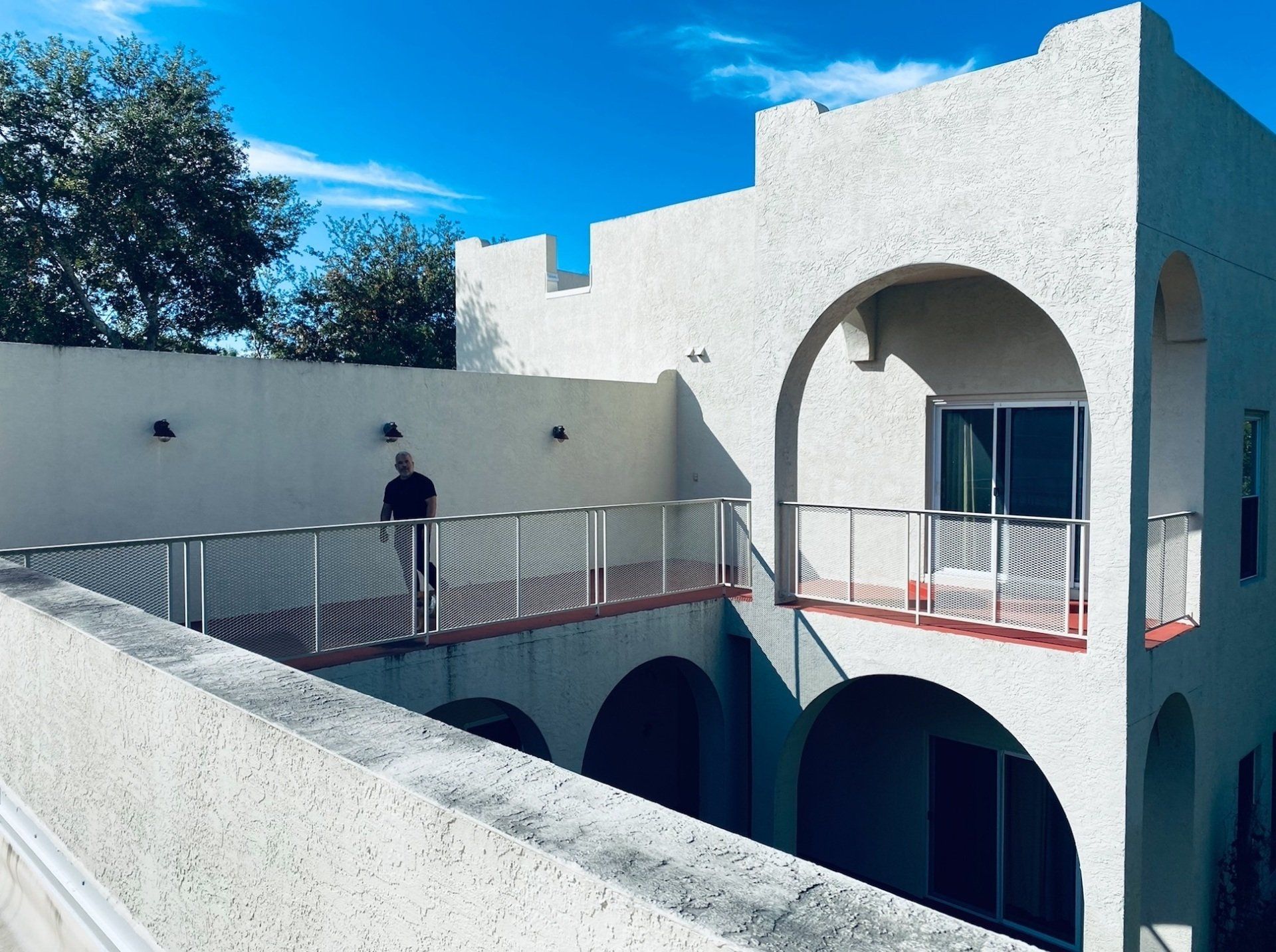
© 2022 Marcus A. Jansen/Artists Rights Society (ARS), New York/VG Bild-Kunst, Bonn, courtesy Expressive Culture LLC
You might be interested?
7 June 2022
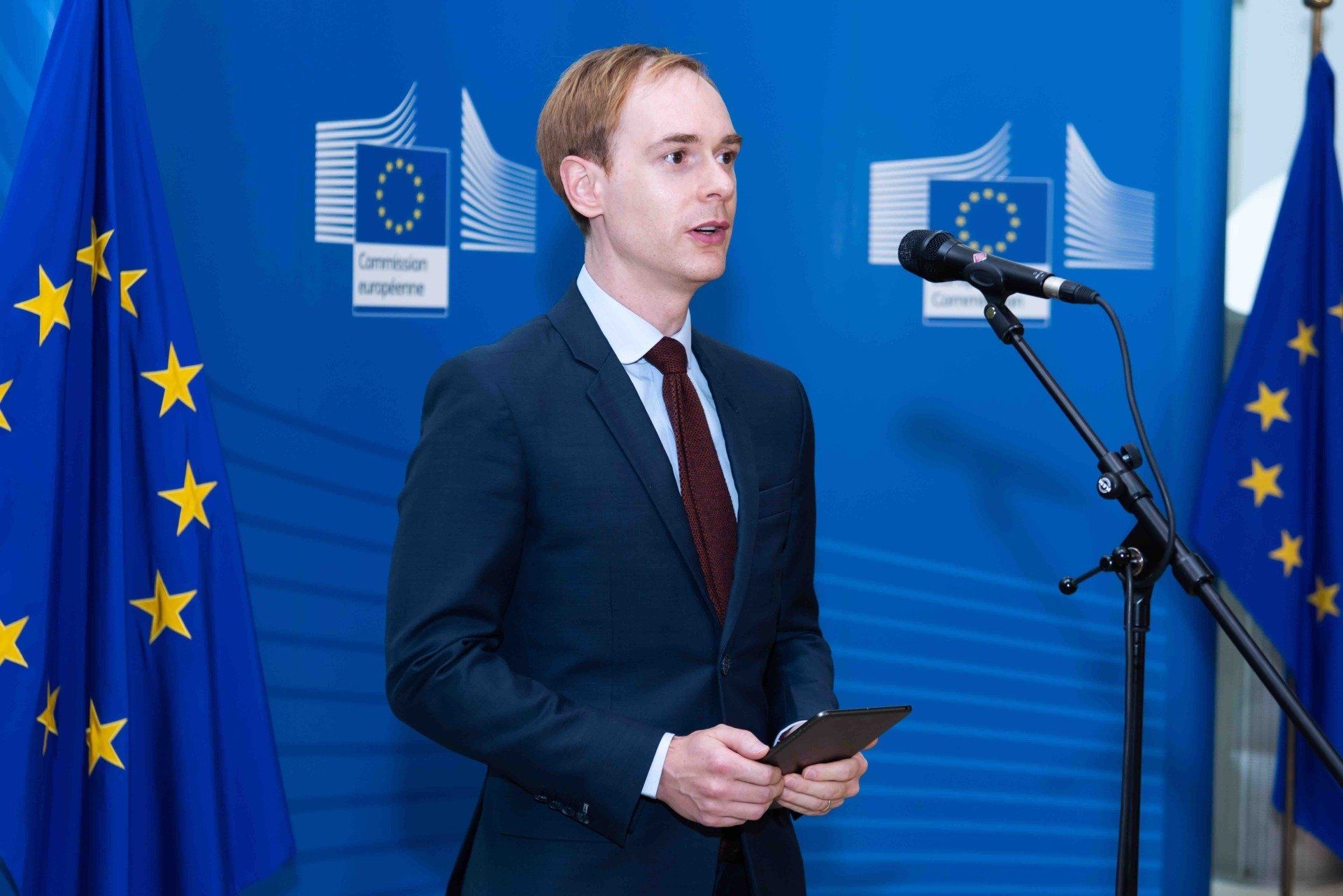
Art/Lifestyle Calendar - 3 June 2022
News: The European Bauhaus Prize 2022 will be awarded on 11 June in Brussels.
An open project for creative people! An exclusive interview with Adalbert Jahnz spokesperson for environment, maritime affairs and fisheries, transport, and New European Bauhaus.

Düsseldorf/ Personalities - 26 May 2022
The INVICTUS GAMES are coming to Düsseldorf! An interview with Vocko, Team Captain of the INVICTUS GAMES 2022 in The Hague.
©IG23

Art - 1 Mai 2022
HA Schult Wall of Freedom -
Freedom in the words of Drew Hammond
©Ansgar van Treeck
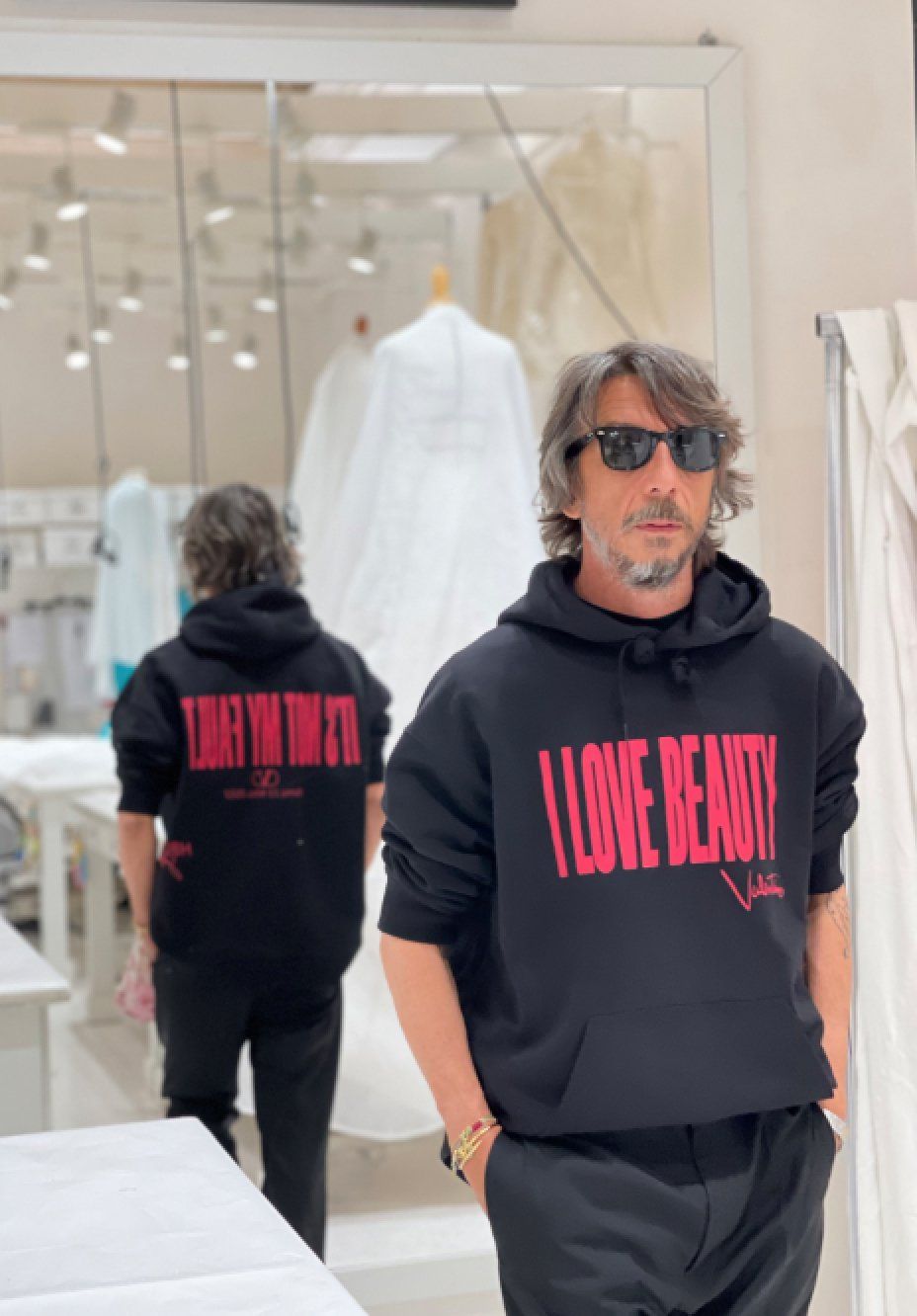
Fashion - 13 May 2022 - F. Morelli
Maison Valentino celebrated the 90th birthday of its founder Valentino Garavani .©Maison Valentino
Pierpaolo Piccioli ©Maison Valentino

© 2022 Marcus A. Jansen/Artists Rights Society (ARS), New York/VG Bild-Kunst, Bonn, courtesy Expressive Culture LLC
Deutsche Version des Interviews
Marcus Jansen im Interview
"Kunst als wesentlicher Sinn, um zu überleben. Etwas zu tun, das länger lebt als ich"
Derzeit bei Almine Rech auf der Art Basel Schweiz - Juni 16 to 19, 2022.
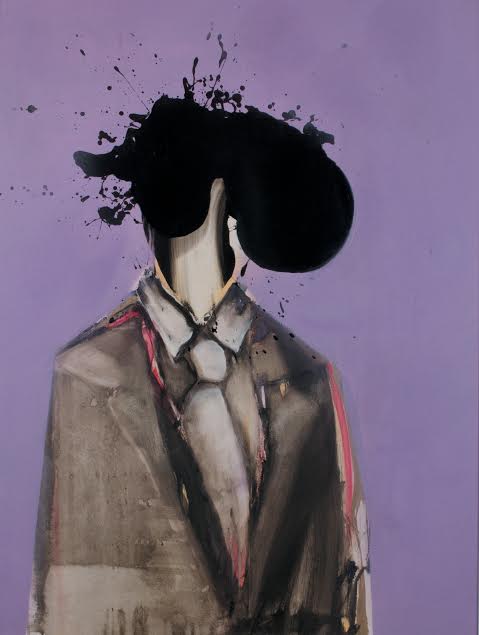
Faceless
© 2022 Marcus A. Jansen/Artists Rights Society (ARS), New York/VG Bild-Kunst, Bonn, courtesy Expressive Culture LLC
Marcus Jansen ist einer der wichtigsten zeitgenössischen amerikanischen Künstler. Im Alter von 6 Jahren hatte er seine erste Ausstellung in New York. Während seiner Jugend lebte er in Europa und machte seinen Abschluss am Kunstgewerbe Berufskolleg für Technik und Medien am Platz der Republik in Mönchengladbach. Später kehrte er in die USA zurück und schlug eine militärische Laufbahn ein. Als Soldat nahm er an den Golfkriegsoperationen "Desert Shield" und "Desert Storm" teil. Seine militärischen Erfahrungen haben ihn geprägt und seine künstlerische Welt für immer verändert.
Marcus Jansens Œuvre wurde als scharfes Messer beschrieben, das durch Politik und Gesellschaft schneidet. Seine Bilder sind eine perfekte Mischung aus Expressionismus, Surrealismus und Graffiti-Kunst.
Berühmt sind auch seine gesichtslosen Bilder, eine Serie, die er 2011 begonnen hat und die eine Art Protest gegen Machtstrukturen darstellt.
Marcus Jansen sagt, dass er bei seiner Arbeit als Künstler von seinem Überlebenswillen angetrieben wird. Die Kunst hat ihm das Leben gerettet, sagt er, und sie lebt länger als er selbst. Als ehemaliger Soldat lassen ihn seine Erfahrungen nicht los, aber er kann nun seine "Kämpfe" durch die Malerei kanalisieren und sie als zusätzliches Werkzeug für sein Vokabular nutzen. In seinen eigenen Worten:
"Kunst ist der intime Akt des Krieges".
Interview mit Marcus Jansen
Alethea&Art Magazin: Was treibt Sie bei Ihrer Arbeit als Künstler an?
Marcus Jansen: Vielleicht ein wesentlicher Sinn für das Überleben. Etwas zu tun, das länger lebt als ich. Ich habe in früheren Interviews gesagt, dass es mein Leben gerettet hat, und das habe ich immer ganz wörtlich gemeint. Es ist eine Möglichkeit, sich etwas vorzustellen und zu verschwinden, sich neu zu organisieren und zu entdecken, und das alles zur gleichen Zeit, während man einen Bereich ohne Grenzen und Anhaftungen betritt.
Alethea&Art Magazin: Haben Sie immer noch mit den Folgen Ihrer Arbeit als Soldat zu kämpfen?
Marcus Jansen: Ich denke, die Auswirkungen eines ehemaligen Soldaten, der die Folgen des Krieges erlebt hat, sind etwas, das mich immer noch demütig macht. Aber in meinem Fall habe ich gelernt, die "Kämpfe" durch die Malerei zu kanalisieren und sie als zusätzliches Werkzeug für mein Vokabular zu nutzen. Ich umarme und akzeptiere sie als Teil meiner Praxis.
Alethea&Art Magazine: Können Sie sagen, wie die gesichtslosen Gemälde entstanden sind?
Marcus Jansen: Ich habe 2011 mit der gesichtslosen Serie begonnen, das ist jetzt elf Jahre her, und sie 2012 veröffentlicht. Damals waren sie eine Abkehr von meinen Stadtlandschaften und eine Antwort auf die Macht der Unternehmen, Anonymität und Geheimhaltung. Sie haben sich zu einer Art Protest gegen verschiedene Machtstrukturen entwickelt, von Männern in Anzügen bis hin zu Kolonialisten, aber auch zu Opfern dieser Mächte.
Alethea&Art Magazine: Mit welchen Kunstwerken hat Ihr Durchbruch begonnen?
Marcus Jansen: Das ist schwer zu sagen, da ich in den letzten fast dreißig Jahren mehrere Durchbrüche hatte. Aber kommerziell gesehen, "Creeping Obstacles in Kansas", das es auf das Cover von "New American Paintings" geschafft hat, und vielleicht "E Pluribus Unum", das Warner Brothers für ihre 80-Jahr-Feier ausgewählt hat. Außerdem bin ich in die Fußstapfen von Andy Warhol getreten und habe 2008 ebenfalls eine Absolut-Flasche gemalt. Alle diese Werke waren zu ihrer Zeit bahnbrechend.
Alethea&Art Magazine: In einem früheren Interview sagten Sie, dass Freiheit eine wesentliche Rolle in Ihrer Kunst spielt. Haben bestimmte Kunstströmungen oder Künstler Ihre Arbeit beeinflusst?
Marcus Jansen: Ja. Ich wurde schon früh von Graffiti-Writern und Pionieren in New York City beeinflusst. Ich erkannte sofort, dass Kunst bedeutet, etwas aus dem Nichts zu schaffen, und die Bewegung, das Geheimnisvolle und die Lebendigkeit, die damit einhergingen, waren frei und fesselnd.
Alethea&Art Magazine: Wo wird Ihre nächste Ausstellung stattfinden?
Marcus Jansen: Zurzeit stelle ich mit Almine Rech auf der Art Basel Hongkong aus und danach auf der Art Basel Schweiz, ebenfalls mit Almine Rech. Außerdem werde ich bald in der Richard Beavers Gallery am zweiten Standort in Soho ausstellen. Auch das Bronx Museum of the Arts hat kürzlich ein Werk in seine ständige Sammlung aufgenommen.
Der Künstler
Marcus Jansen wurde in Manhattan geboren. Seine Familie lebte im South Bronx Borough von New York City, bevor sie später nach Queens NY zog, wo er im Alter von 6 Jahren seine erste Ausstellung hatte. Im Kunstunterricht in der Schule wurde sein Bild eines männlichen Löwen ausgewählt und im Lever House in Manhattan aufgehängt.
Seine jamaikanische Mutter und sein deutscher Vater zogen ihn zweisprachig auf. Später lebte er mit seinen Eltern in mehreren europäischen Ländern, in Deutschland, den Niederlanden und Frankreich. Dort erlebte er als einziges farbiges Kind in seiner Schule Rassismus. Seine Liebe zur Kunst begann sehr früh und er wurde von Künstlern wie Robert Rauschenberg und West Rubinstein inspiriert.
Später kehrte Marcus Jansen nach Amerika zurück und schlug eine militärische Laufbahn ein. Aufgrund seiner Erfahrungen während der Golfkriegsoperation Desert Shield und seiner Teilnahme an den Combat Airborne Engineering Units Desert Storm verließ er 1997 das Militär.
Marcus Jansen kehrte nach New York zurück und begann 1999, seine Kunst an der Ecke Prince Street und W. Broadway zu verkaufen, wie in der 2016 erschienenen Kunstdokumentation Examine and Report zu sehen ist.
Seine internationale Karriere als Künstler begann mit einem Auftrag von Absolut Vodka. Jansens erstes Buch, Modern Urban-Expressionism, wurde 2006 veröffentlicht.
Das Interview wurde von C. Mauer geführt - 7 Juni 2022


